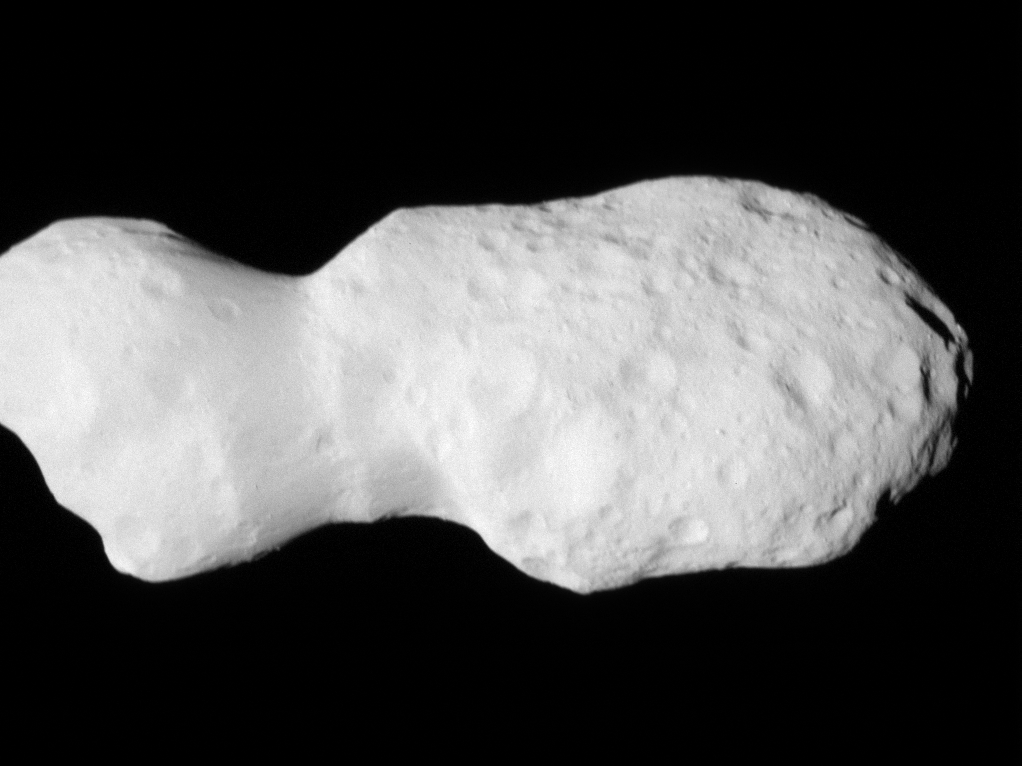NASA’s Lucy spacecraft has captured stunning images of an asteroid with a peculiar shape resembling two ice cream cones stacked together, providing new insights into the early formation of our solar system.
On April 20, the spacecraft flew approximately 600 miles from the asteroid Donaldjohanson, revealing an unexpected formation that surprised even veteran space scientists. Rather than the typical potato-like shape of many small celestial bodies, Donaldjohanson appears to be a contact binary—two objects that collided and fused together—with an unusually configured connecting region.
“Asteroid Donaldjohanson has strikingly complicated geology,” says Hal Levison, principal investigator for Lucy at Southwest Research Institute in Boulder, Colorado. “As we study the complex structures in detail, they will reveal important information about the building blocks and collisional processes that formed the planets in our Solar System.”

The initial high-resolution images show Donaldjohanson is larger than scientists originally estimated, measuring approximately 5 miles long and 2 miles wide at its broadest point. The asteroid’s full structure wasn’t immediately visible as it exceeded the field of view of Lucy’s Long-Range Reconnaissance Imager (L’LORRI).
Named after the famous 3.2-million-year-old human ancestor fossil “Lucy,” NASA’s spacecraft is on a 12-year journey to study multiple asteroids, primarily focusing on the Trojan asteroids that share Jupiter’s orbit. These ancient space rocks are considered pristine remnants from the early solar system, potentially holding clues about planetary formation.
Donaldjohanson, itself named after one of the discoverers of the Lucy fossil, is a relatively youthful asteroid at approximately 150 million years old. The asteroid’s slow rotation was already known from Earth-based observations that detected significant brightness variations over a 10-day period, but the peculiar shape of its connecting region came as a surprise.
This encounter served as a critical dress rehearsal for Lucy’s primary mission. The spacecraft conducted dense observations to maximize data collection from its suite of scientific instruments. Beyond the L’LORRI camera, Lucy carries a color imager, infrared spectrometer, and thermal infrared spectrometer, with this additional data expected to be analyzed in the coming weeks.
“These early images of Donaldjohanson are again showing the tremendous capabilities of the Lucy spacecraft as an engine of discovery,” said Tom Statler, program scientist for the Lucy mission at NASA Headquarters in Washington. “The potential to really open a new window into the history of our solar system when Lucy gets to the Trojan asteroids is immense.”
The spacecraft will spend most of 2025 traveling through the main asteroid belt before reaching its first primary target, Trojan asteroid Eurybates, in August 2027. By then, scientists hope the lessons learned from studying Donaldjohanson’s unusual structure will help them better understand the diverse shapes and compositions found among these ancient celestial bodies.
If our reporting has informed or inspired you, please consider making a donation. Every contribution, no matter the size, empowers us to continue delivering accurate, engaging, and trustworthy science and medical news. Independent journalism requires time, effort, and resources—your support ensures we can keep uncovering the stories that matter most to you.
Join us in making knowledge accessible and impactful. Thank you for standing with us!

